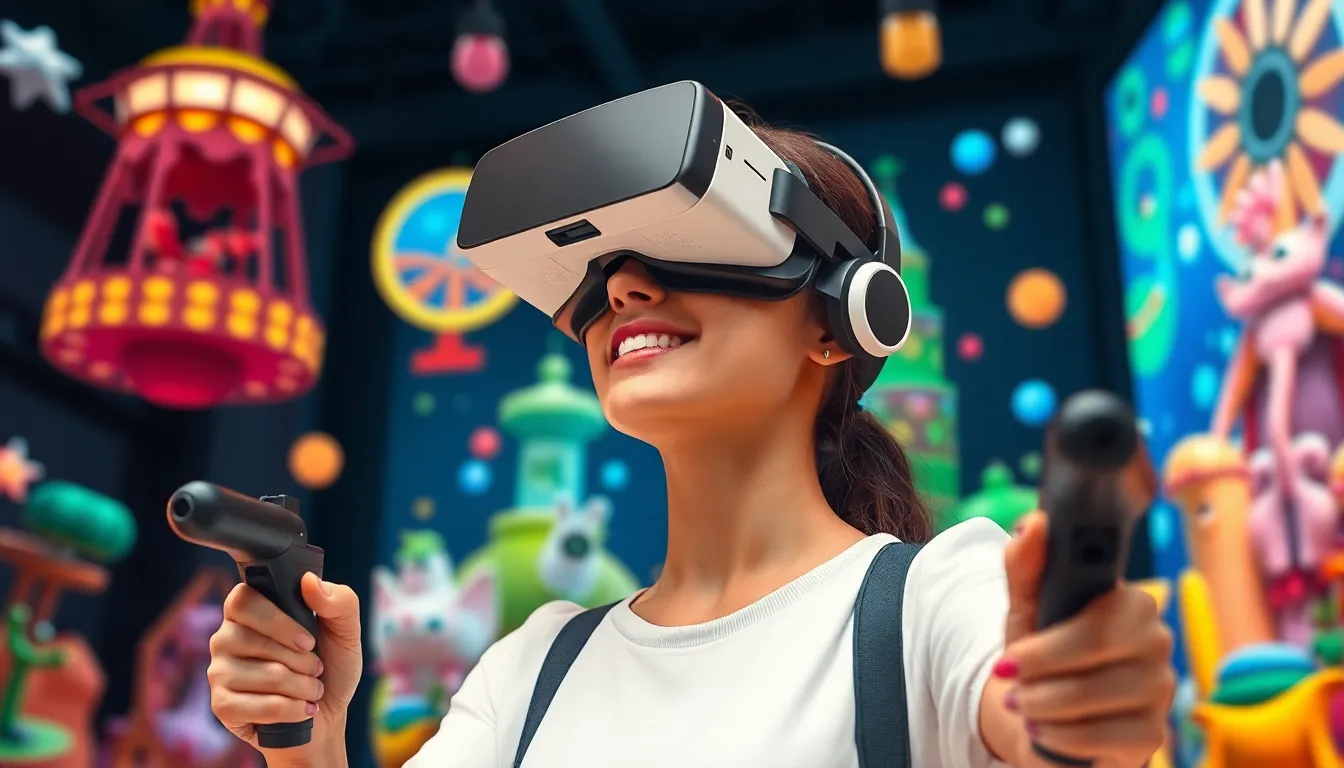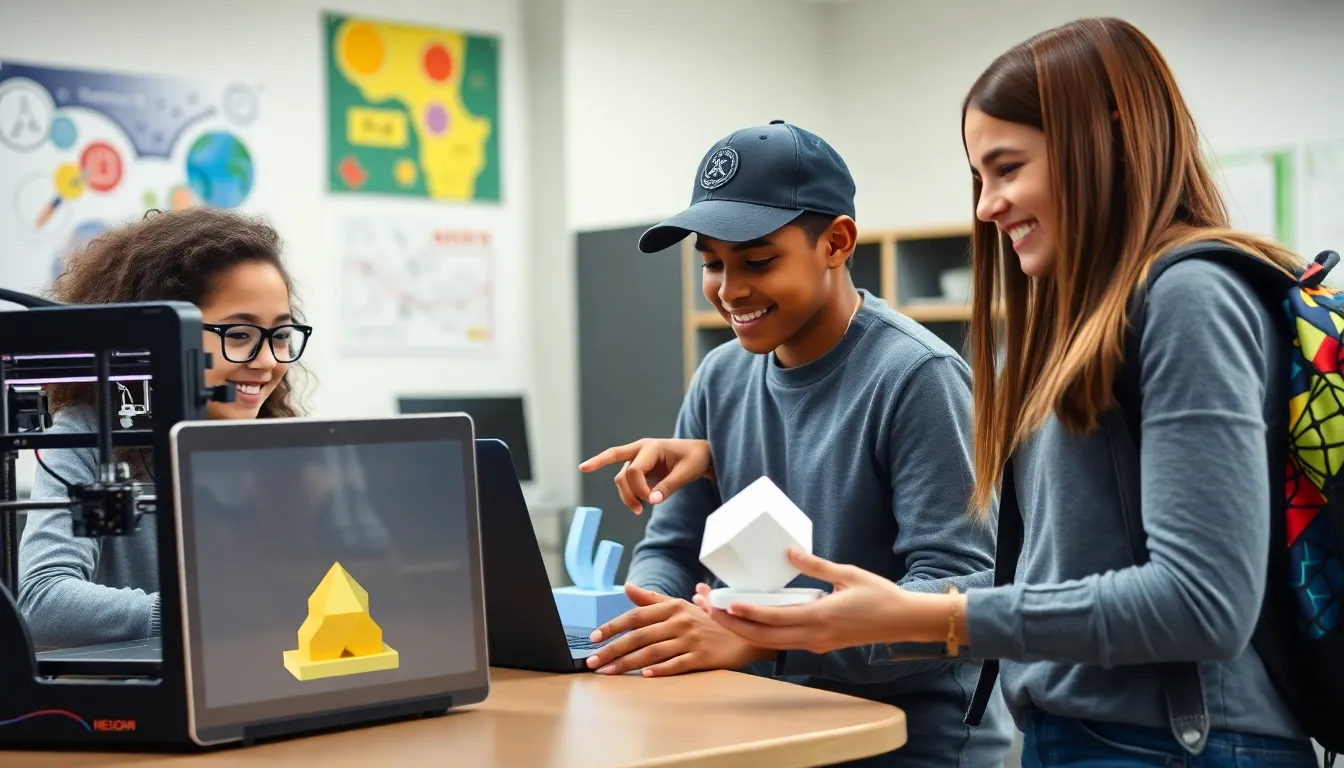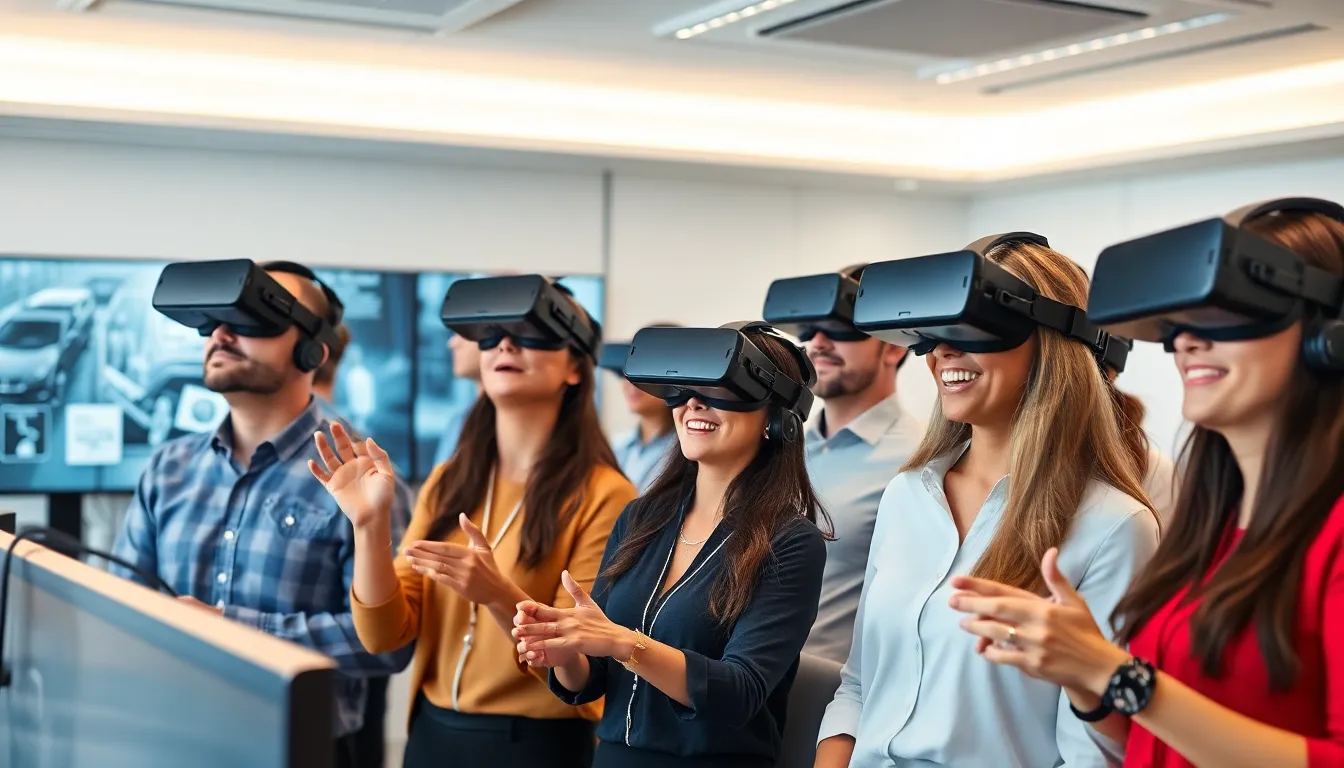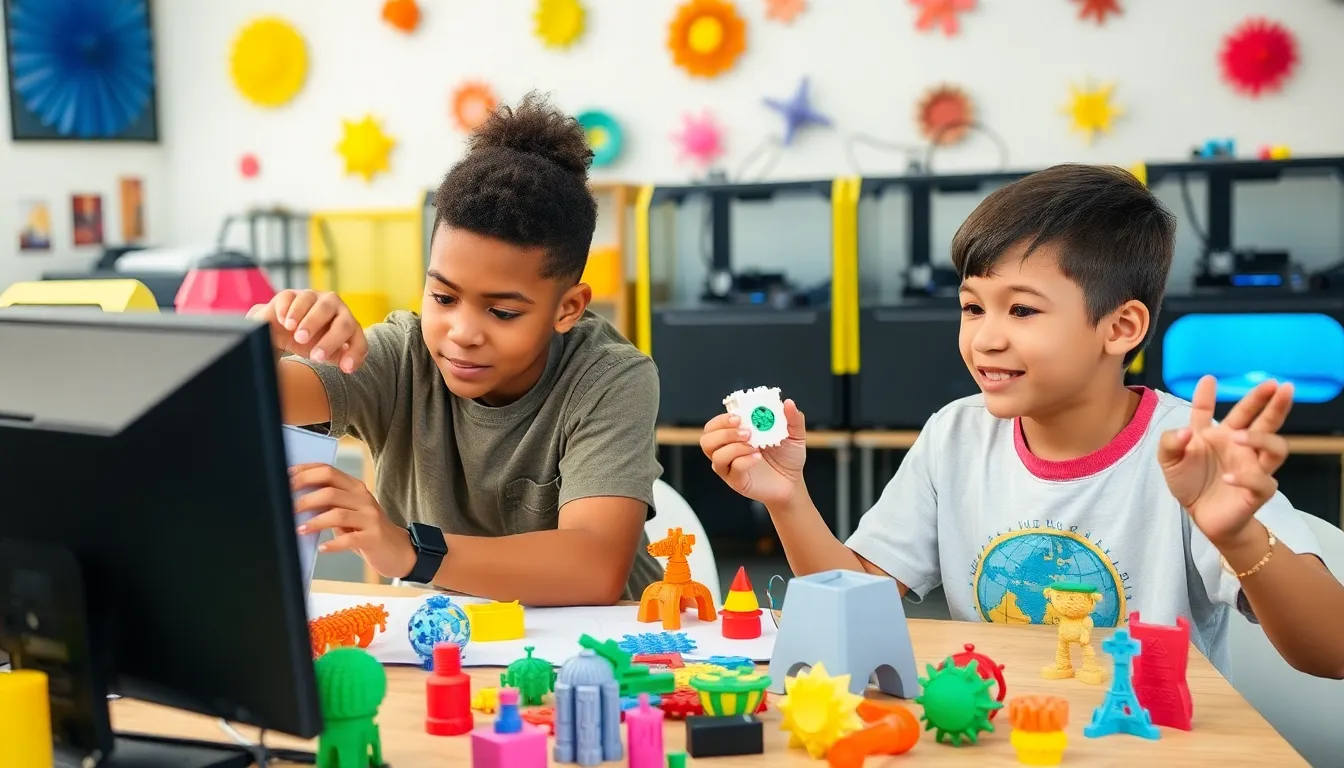Virtual reality animation is transforming how audiences experience storytelling and entertainment. By immersing viewers in dynamic 3D environments, it creates a unique blend of art and technology that captivates the imagination. From video games to educational tools, virtual reality animation offers limitless possibilities for creators and consumers alike.
As the technology continues to evolve, artists are pushing the boundaries of creativity, crafting experiences that engage all the senses. This innovative medium not only enhances visual storytelling but also fosters deeper emotional connections with characters and narratives. With its growing popularity, understanding the impact of virtual reality animation is essential for anyone interested in the future of digital content.
Table of Contents
ToggleOverview of Virtual Reality Animation
Virtual reality animation combines advanced computer graphics with immersive storytelling techniques, resulting in engaging experiences. This technology enables users to interact with 3D environments, enhancing the narrative’s depth and complexity. Artists leverage powerful software to design realistic animations, creating vivid landscapes and dynamic characters.
Virtual reality animation incorporates elements like spatial audio and haptic feedback, further increasing the sense of presence. By simulating real-world sensations, it allows users to connect with the content on multiple sensory levels. Animation styles range from hyper-realistic portrayals to stylized art forms, catering to various tastes and preferences.
Innovators in the field explore diverse applications beyond entertainment. Virtual reality animation serves educational purposes, providing interactive learning environments that facilitate retention. It also finds utility in fields such as therapy, where it aids in treating phobias and anxiety disorders. The adaptability of this medium showcases its potential impact across different industries.
As advancements in technology continue, virtual reality animation evolves, offering creators new tools to realize their visions. The integration of artificial intelligence and machine learning algorithms enhances depth and interactivity, pushing creative boundaries further than ever before. Understanding this evolution is essential for those invested in the future of digital storytelling and immersive experiences.
Key Technologies Driving Virtual Reality Animation

Key technologies form the backbone of virtual reality animation, significantly impacting user experience and creative possibilities. Understanding these technologies is essential for those involved in the evolving field of digital content.
Virtual Reality Hardware
Virtual reality hardware encompasses essential devices that enable users to engage with immersive environments. Key components include:
- Head-Mounted Displays (HMDs): Devices like Oculus Quest andHTC Vive provide immersive visual experiences by delivering high-resolution graphics directly to the user’s eyes. These displays track head movements to create a sense of presence.
- Motion Controllers: Devices such as the Valve Index controllers allow users to interact with virtual elements. These controllers track hand movements, facilitating intuitive interactions within 3D spaces.
- Tracking Systems: Systems like infrared cameras and external sensors accurately track user positioning within VR environments. They enhance spatial awareness, enabling seamless navigation in virtual worlds.
- Haptic Devices: Haptic gloves and vests provide tactile feedback, enhancing immersion by simulating physical sensations. These devices help users feel the virtual environment, making experiences more engaging.
- Audio Components: Spatial audio systems deliver sound that changes based on user orientation and movement, reinforcing the 3D environment’s realism and emotional depth.
Software Tools for Animation
Software tools play a vital role in the creation of virtual reality animations, offering capabilities that enhance storytelling and visual appeal. Key software includes:
- 3D Animation Software: Programs like Blender and Autodesk Maya allow creators to develop intricate 3D models and animations, providing powerful tools for crafting detailed environments and characters.
- Game Engines: Engines such as Unity and Unreal Engine enable developers to build immersive experiences. They offer robust support for real-time rendering and physics simulations, optimizing performance for VR applications.
- VR Development Kits: Kits like Oculus SDK and SteamVR provide resources for building VR applications. These kits include libraries and sample projects that streamline development, making it easier to integrate hardware features.
- Collaboration Tools: Platforms like FrameVR and Gather enable teams to collaborate in virtual environments. These tools allow creators to test and revise animations in real time, enhancing efficiency and creativity.
- Rendering Software: Software such as Octane Render enhances the visual quality of VR animations. Advanced rendering capabilities produce stunning graphics that elevate the viewer’s overall experience.
By leveraging these hardware and software technologies, creators push the boundaries of virtual reality animation, producing compelling and immersive experiences for audiences.
Applications of Virtual Reality Animation
Virtual reality animation finds extensive applications across various sectors, enhancing experiences and outcomes in unique ways. Significant areas include entertainment, education, and healthcare.
Entertainment and Gaming
Virtual reality animation reshapes the entertainment and gaming landscapes by delivering immersive experiences. Users actively engage in gameplay within rich, interactive environments, promoting deeper emotional connections to narratives. Popular franchises like “Beat Saber” and “Half-Life: Alyx” exemplify how VR brings new dimensions to storytelling and gameplay, where players can physically interact with virtual elements. Additionally, virtual reality concerts and events like those from platforms such as Wave and NextVR enable audiences to experience live performances as if they are present, expanding the possibilities of entertainment consumption.
Education and Training
Virtual reality animation revolutionizes education and training methods by providing hands-on, immersive learning experiences. Instructors can simulate real-world scenarios, fostering practical skills development. Fields like medicine utilize VR for surgical simulations, allowing students to practice procedures in a safe environment. Corporate training programs also leverage VR to immerse employees in realistic situations, enhancing skill acquisition and retention. Research shows that learners retain 90% of information through experiential learning, illustrating the effectiveness of virtual reality in educational contexts.
Healthcare
Virtual reality animation plays a pivotal role in healthcare, offering innovative solutions for mental health treatment, rehabilitation, and surgical training. Therapists employ VR to expose patients to anxiety-inducing situations, facilitating gradual desensitization. Furthermore, VR-based rehabilitation exercises help improve motor skills in stroke survivors and patients recovering from injuries by creating engaging virtual environments that encourage movement. According to studies, 85% of patients report improvement when participating in VR-based therapy programs, highlighting its efficacy in clinical settings.
Benefits of Virtual Reality Animation
Virtual reality animation offers numerous advantages that elevate both user experience and storytelling techniques. By integrating interactive elements and immersive environments, this technology transforms how audiences engage with narratives.
Enhanced User Experience
Enhanced user experience stems from the interactive nature of virtual reality animation. Users engage in real-time with 3D environments, allowing for personal exploration and participation. This interaction fosters a deeper connection to the content, as users become active participants rather than passive observers. Feedback systems, including haptic devices, enrich these experiences further by providing tactile sensations corresponding to user actions. An increase in engagement can lead to improved retention of information and a more impactful emotional response to the narrative.
Immersive Storytelling
Immersive storytelling effectively captivates audiences by placing them directly within the narrative. Virtual reality animation creates dynamic environments where viewers experience stories from unique perspectives. This medium allows for multifaceted plots and character arcs, enhancing emotional engagement. The incorporation of spatial audio complements visual components and helps create a sense of presence, making viewers feel as if they belong to the story. Through immersive storytelling, creators can evoke stronger feelings, drive empathy, and facilitate meaningful connections to characters, making overall experiences more memorable.
Challenges in Virtual Reality Animation
Virtual reality animation faces several challenges that impact its development and user experience. Addressing these hurdles proves vital for creators aiming to harness the full potential of this technology.
Technical Limitations
Technical limitations present significant hurdles in virtual reality animation. Hardware constraints often restrict the complexity of animations. Most consumer-grade head-mounted displays (HMDs) have limited resolution and refresh rates, which can cause motion sickness or discomfort in users. Additionally, latency issues during interaction may lead to decreased immersion and responsiveness. Software also presents challenges; many existing animation tools aren’t optimized for VR environments, limiting creators’ ability to produce high-quality experiences efficiently. Maintaining a balance between performance and quality remains essential for enhancing user interaction and satisfaction.
Content Creation Costs
Content creation costs for virtual reality animation can be substantial. Developing high-quality VR experiences often requires expertise in various disciplines, such as 3D modeling, programming, and sound design. Hiring skilled professionals in these fields can lead to increased project expenses. Furthermore, the need for advanced software tools and robust hardware, such as powerful computers and VR-specific equipment, contributes to high initial investments. As creators experiment with more intricate designs and interactivity, overall production costs can escalate, making it essential to plan budgets carefully to deliver compelling VR content effectively.
Virtual reality animation stands at the forefront of digital storytelling and immersive experiences. Its ability to engage audiences in interactive 3D environments transforms how stories are told and felt. As technology evolves creators are empowered to explore uncharted territories in narrative depth and emotional engagement.
The diverse applications of VR animation extend beyond entertainment into education and healthcare showcasing its versatility. While challenges remain in technical development and cost barriers the future of virtual reality animation promises exciting advancements. Embracing this technology is essential for anyone looking to understand the next wave of digital content creation and its profound impact on audiences worldwide.






